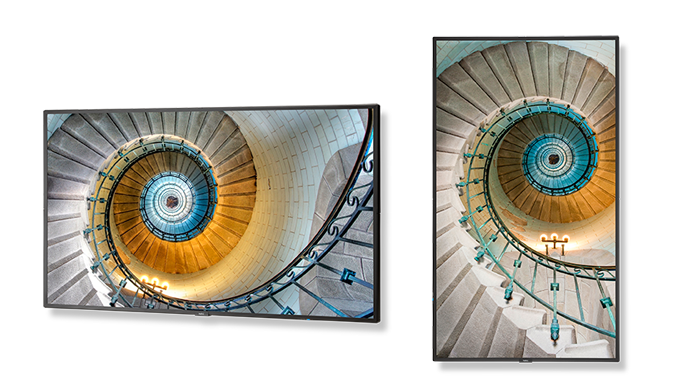Why use a professional large format display?
On first sight, many people would not distinguish any difference between a commercial panel and a consumer television (TV).
You may be lead to question the higher initial price tag of professional panels when they look so much like televisions, but it is important not to confuse these two technologies, since their functions and applications vary greatly.
We've enumerated the main differences below




